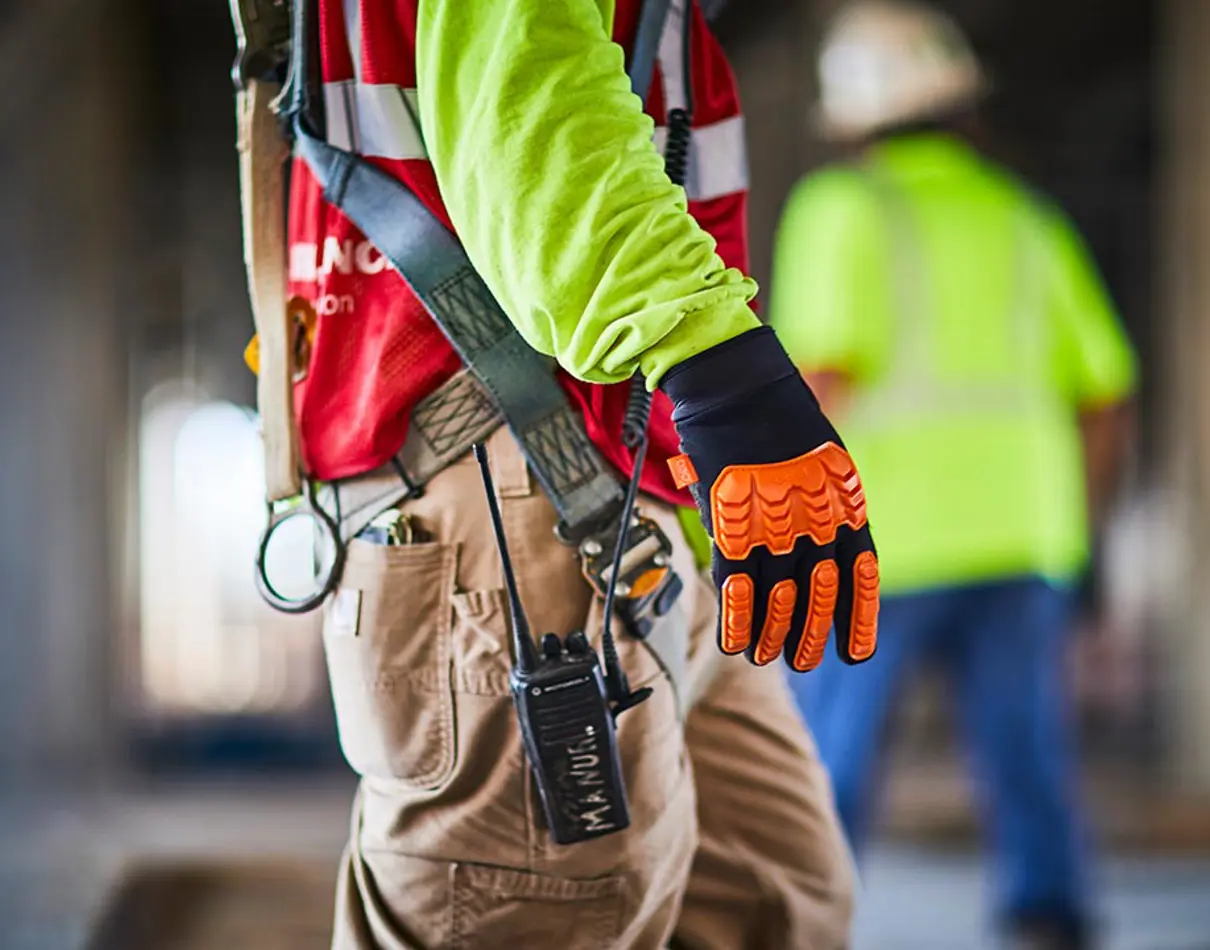ISEA 138 - Your Questions Answered

ANSI/ISEA 138, American national standard for performance and classification for impact resistant hand protection, has been published to improve on the impact performance of industrial gloves.
The voluntary standard, an industry first, will assess the performance of gloves that are designed to reduce the risk of back-of-hand (dorsal) injuries.
For many years, there have been standards in the US and Europe for industrial gloves that protect from cuts, punctures, abrasion and chemical exposure. However, until recently, there was nothing to address the risk from impact injuries in North America.
In response to this significant standards gap, the main manufacturers – together with materials experts D3O – worked with the International Safety Equipment Association (ISEA) to establish testing, classification and labelling requirements for products that offer dorsal impact protection.
The new ANSI/ISEA 138 standard:
- defines the test method
- includes three defined performance levels
- specifies a pictogram mark for each of the levels for compliant gloves
- requires products to be tested in a laboratory with a certificate of accreditation that meets the requirements ISO/IEC 17025:2017, General requirements for the competence of testing and calibration laboratories
![Umbraco.Cms.Core.Models.MediaWithCrops`1[Umbraco.Cms.Web.Common.PublishedModels.Image]](https://cdn.d3o.com/media/1827/d3o-protective-glove-construction-site.jpg?width=1996&height=1042&format=webp&v=1dbb3a68850c7a0)
What ANSI/ISEA 138 Means for Your Business
To help businesses understand how ANSI/ISEA 138 works, D3O has commissioned a white paper featuring contributions from the ISEA and glove manufacturers involved in its production:
Preparing your business for the new glove dorsal impact protection standard
Rodney Taylor, D3O’s Global Sales and Marketing Manager for Industrial PPE and Vice-President of the International Glove Association, said: “The performance levels outlined in ANSI/ISEA 138 have been designed to be simple to understand, making it easier for people to select the right gloves for the right job.
“The new standard will be a real asset in helping US businesses protect workers from impact injuries. It’s something we’re passionate about at D3O and we’re delighted to have been involved.”
ANSI/ISEA 138 – Frequently Asked Questions
D3O’s Rodney Taylor and Chris Meadows, Chair of the ISEA Hand Protection Committee, have put together a list of the most frequently asked questions they have heard on ANSI/ISEA 138 since being involved in its creation.
Which companies participated in the workgroup to develop the new standard?
The ANSI/ISEA 138 standard was drafted by a workgroup composed of D3O (workgroup Chair), MCR Safety, Majestic Glove, Hexarmor, Ansell, Ergodyne and Mechanix Wear. Input was also provided by Dr Lloyd Champagne – a surgeon who specializes in hand injuries.
Members of ISEA’s Hand Protection Group include: D3O, Ansell, Bob Dale Gloves, Conney Safety Products, DSM Dyneema, DuPont Personal Protection, Ergodyne, Global Glove, HexArmor, Honeywell Safety Products, Ironwear, Kimberly-Clark Professional, Lakeland Industries, Magid Glove and Safety, Majestic Glove, MCR Safety, National Safety Apparel, OccuNomix International, Protective Industrial Products, Pyramex Safety, Radians, Saf-T-Gard International, Superior Glove, Wells Lamont Industrial, and World Fibers.
How many gloves manufacturers are making an ANSI/ISEA 138 claim today?
The standard was released in February 2019. Yet, several manufacturers already have ANSI/ISEA 138 compliant gloves available (MCR Safety, Superior Glove Works, and Majestic Glove to name a few).
We are likely to see more and more glove manufacturers joining this space as end-users demand compliant product. End-users are the ultimate source of demand and should not hesitate to request products that are compliant with industry standards from their distributors.
What drives impact performance? Thickness or material?
Impact protection performance is a result of both geometry and material composition. Generic ‘TPR’, no matter how thick, will have limited performance threshold.
Innovative materials, like D3O, can provide huge increases in impact performance without requiring significant mass/thickness increases. The ideal solution considers both thickness and material composition.
Has anyone completed a survey of impact performance?
D3O has conducted its own analysis of the performance landscape. Our analysis indicates that the bulk of the products we tested are either non-compliant or Level 1.
There are a limited set in which meet Level 2 and very few products meet Level 3. Email us at sales@d3o.com to request to see our full analysis. D3O is not aware of anyone else who is completing this analysis.
Are companies that didn’t participate in the work group going to be behind in developing compliant products?
Commercial timing is a function of many factors beyond just access to information about the requirements of the ANSI/ISEA 138 standard, but it does appear that ISEA members have been some the first to market with compliant products.
Are Level 3 products going to offer lower dexterity?
Generally speaking, there is an inverse relationship between protection and comfort that is why it will be critical for material suppliers, like D3O, to develop new and innovative materials that can reduce or potentially eliminate this trade-off.
Current back of hand solutions, particularly TPR, are often merely decorative. ANSI/ISEA 138 will force back of hand materials to build in performance features.
D3O is pleased to offer the thinnest, most flexible products that meet Level 3.
Are compliant products going to be more expensive?
The primary objective of this standard is to reduce injuries – a marginal increase in price could be well worth the direct and indirect cost of an injury.
How do end-users keep suppliers honest?
In this regard, there are advantages to buying from an ISEA member company. The ISEA has a level of self-regulation to avoid gamesmanship. Separately, this is where a material supplier can be extremely valuable.
We can complete limited impact testing to validate performance; please reach out to D3O at sales@d3o.com for more information on this service.
Standards vs Regulations – when will the US adopt a governmental compliance model like Europe?
Likely never – even if the government were to mandate this, it would take years to execute. The burden in North America will continue to fall on end-users to write effective safety SOP’s.